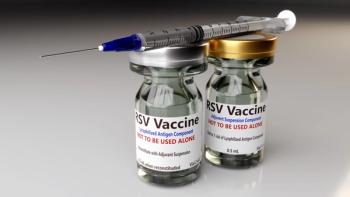
A Patient's Guide to Proper Antibiotic Usage
Antibiotics are the drugsyour doctor prescribes totreat infections caused bybacteria. Since the 1940s, they havebeen "the first line of defense" intreating bacterial infections. Yet,the Centers for Disease Controland Prevention (CDC) estimatesthat more than half of all antibioticsprescribed are not necessary.
Antibiotics are not effectiveagainst viruses and thereforeshould not be used to treat them.Common examples of infectionscaused by viruses include coldsand flu.
Overuse and inappropriate useof antibiotics can make them notwork when you need them,because bacteria develop resistanceto them. This resistance causes thebacteria to thrive and potentiallycause more harm.
What Is Antibiotic Resistance?
The development of antibioticresistance is one of the most challengingproblems in health caretoday. It occurs when the bacteriachange in a way that reduces orstops the effectiveness of antibiotics.When this occurs, the bacteriacan survive and continue togrow and strengthen.
If you take antibiotics and reallydo not need them, they may losetheir strength and ability to effectivelytreat the bacteria. The mostimportant way to reduce or preventantibiotic resistance is by educatingyourself about the properuse of antibiotics.
Steps to Reduce Antibiotic Resistance
- Never insist that your doctor prescribe an antibiotic for you
- Practice good hand-washing techniques to reduce your risk of getting or spreading aninfection—hands should be washed with warm water and soap for at least 20 seconds
- Never take antibiotics for viral infections
- Maintain a healthy lifestyle by eating a balanced diet, drinking enough liquids, exercising, and getting enough rest
- Never take antibiotics that were prescribed for someone else
- Never take antibiotics that were left over from a previous infection
- If antibiotics are prescribed for you, finish them even if you feel better
When to Take (or Not to Take)Antibiotics
Knowing when you may needan antibiotic depends on the kindof infection you have.
The first step is to consult yourphysician to determine whetheryour infection is bacterial or viral.Always consult your doctor if yoususpect that you have an infectionof any kind.
Colds and Flu
As stated above, viruses causethese diseases. Antibiotic therapywill not cure them. Talk to yourhealth care provider about themany over-the-counter medicationsavailable to treat the symptomsof colds and flu.
Remember to inform your doctoror pharmacist about all themedications you are currently takingso as to avoid harmful druginteractions.
Sore Throats
Viruses typically cause sorethroats, but bacteria, such as instrep throat, can cause some. Yourphysician may do a culture and asensitivity test before prescribingantibiotic therapy.
Sinus Infections
Both viruses and bacteria cancause these infections. If you havea runny nose with yellow or greenmucus, you may need an antibiotic,so consult your physician.
Ear Infections
These infections do not alwaysrequire antibiotic treatment, becauseboth viruses and bacteria cancause them.
Coughs and Bronchitis
Viruses almost always causethese conditions. However, if youhave had a medical problem withyour lungs before, bacteria may beinvolved, and an antibiotic may beprescribed. Consult your doctorabout any prolonged coughs, especiallycoughs with phlegm.
Proper Use of Antibiotics
When an antibiotic is prescribedfor you, you should take the followingsteps:
- Inform your physician of anyallergies you have—such as apenicillin allergy—prior toreceiving any antibiotics.Women should inform theirdoctor if they are pregnant.Women also should be awarethat some antibiotics couldmake their birth control pillsless effective or make themmore susceptible to developinga yeast infection. Yourhealth care provider will discussrecommendations toaddress these issues.
- Be sure to take the completeamount of antibiotic prescribedaccording to the physician'sinstructions. Failure tocomply may result in a reoccurrenceof the bacterial infection.Know how and when totake your antibiotic.
- Ask your pharmacist aboutpotential side effects, and contactyour physician immediatelyif serious reactions occur.
- If you miss a dose, do not doublethe next dose. Simplyresume with the next scheduleddose as directed.
- Because some foods and alcoholmay interact badly withantibiotics, discuss with yourpharmacist whether youshould take antibiotics on anempty or full stomach.
- Make sure that antibiotics arestored properly. Althoughmost may be stored at roomtemperature in a dry place,some require refrigeration.
Antibiotics can be very powerfulin treating bacterial infectionswhen they are used properly. Tomaintain their effectiveness, theyshould be used only when necessary.
The best way to combat infectionsis to educate yourself andthose around you on the properway to treat infections withoutcausing harm or making thingsworse.
Ms. Terrie is a clinical pharmacy writerbased in Slidell, La.
Newsletter
Stay informed on drug updates, treatment guidelines, and pharmacy practice trends—subscribe to Pharmacy Times for weekly clinical insights.




















































































































































































































